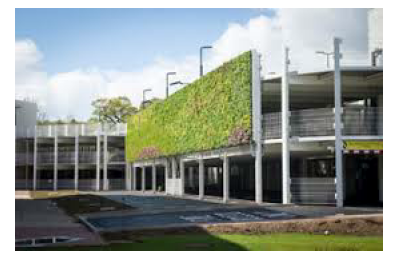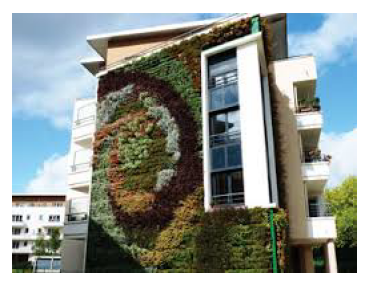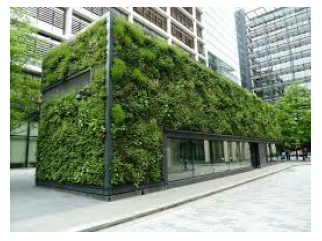Coverup SLO’s ungainly buildings with living walls
September 14, 2019
 OPINION by DAVID BRODIE and ALLAN COOPER
OPINION by DAVID BRODIE and ALLAN COOPER
From the point of view of its outward appearance, San Luis Obispo is quickly becoming less welcoming. Many of the new, over-tall buildings just completed or under construction are contributing to this unwelcome feeling as they appear, within the context of our beloved downtown, both alien and non-conforming.
There are trendy dark grey buildings, buildings clad in dark weathering steel and scaleless, boxy buildings with small windows whose only appeal is that they can meet quotas and be delivered on time and on budget. The concerning byproduct of all this is that these dark buildings trap and radiate heat, the taller buildings compete with neighboring buildings for natural daylight and the scarcity of windows block through ventilation.
For architects, creativity and logic sometime meet. But more often than not they don’t and when the architect pursues the fashion of the day logic seldom wins out.
Moreover, the incongruous scale of these buildings is a testament to nothing more than greed.
However, short of tearing these buildings down, there is a quick and good solution to all of this. Let’s erect in front of these ungainly buildings vertical gardens or living walls. These living walls will provide visual relief (even in the form of public art) when concealing wall surfaces covered in weathered steel, walls painted dark grey, large expanses of windowless walls and open air bays surrounding parking garages. They can even mitigate the scale of overly tall buildings.

The added benefit for doing this is that we will be helping to accommodate climate change with important cooling and carbon sequestering green vegetation. Living walls have a carbon reducing benefit as they are able to sequester carbon dioxide in plant biomass and substrate (whether the growth medium be hydroponics or soil).
Recirculating water systems keep the amount of water used on green wall plants to a minimum, helping to conserve water. Living green walls incorporate irrigation systems that deliver what plants need without over-saturation or structural water damage. Living walls not only shield buildings from direct sunlight, but ‘evapotranspiration’ by plants also helps cool walls and reduce the heat load of adjoining buildings.
Living walls comprised of deciduous plant materials have the added benefit of screening out unwanted glare and heat in the summer months while inviting in natural light and heat in the winter. Living walls are easy to clean, absorb sound, increase biodiversity, attract pollinators and could become a form of edible landscape, an urban “farm” that takes up nearly zero square feet.
Finally, living walls, in conjunction with trees, reflective paving and green roofs, can help reduce urban heat island effects by shading building surfaces, deflecting radiation from the sun, and releasing moisture into the atmosphere.
All of this could be economically achieved through rebates and green energy tax credits for retrofits and through green energy ordinances for new construction. Of course living walls will require maintenance, but these maintenance costs will be more than offset by savings in the BTU’s required for the cooling and heating of these buildings and through the increase in property values.

Because of the critical, immediate threat of climate change (as of this writing the Amazon forests are engulfed in fire and the Greenland icecap is melting at an alarming rate), architects, developers and planners should have put their egos and/or pocketbooks to rest and dealt directly with the more than likely prospect of potentially catastrophic heat waves and water shortages. They should have creatively dealt with these two challenges to our very survival on this planet in serious, logical and scientific terms.
Sadly, many of our local design professionals (we can’t always blame out-of-town designers), aided and abetted by our planners, are complicit in creating an environment that is not only hostile to behold but also contrary to good environmental stewardship.
So market-driven planning and design has failed us. Our talented Cal Poly design faculty, by virtue of their apathy and/or lack of interest in local civic affairs, have failed us. Even those sitting on our increasingly powerless city advisory committees have failed us.
Then who is left to take the lead? It is incumbent on our duly-elected mayor and City Council members, the public servants most directly accountable to the very residents who voted them into office, to address head-on these exigencies of climate change and to do so while at the same time insuring that our built environment remains inviting for its users.






The comments below represent the opinion of the writer and do not represent the views or policies of CalCoastNews.com. Please address the Policies, events and arguments, not the person. Constructive debate is good; mockery, taunting, and name calling is not. Comment Guidelines